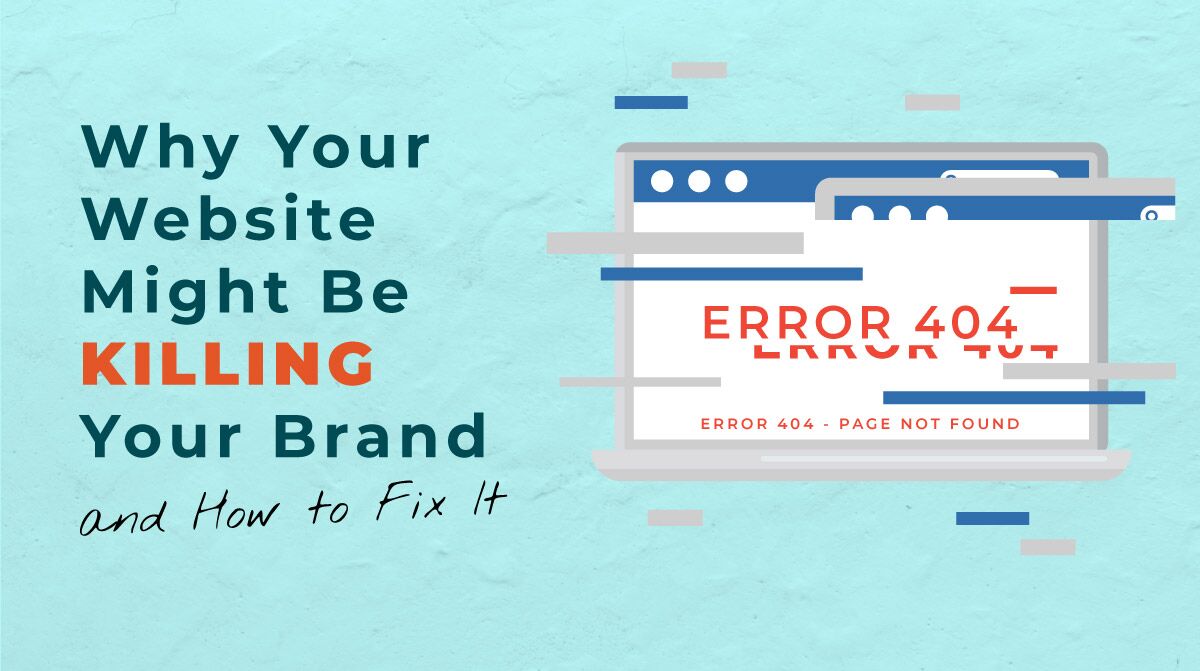In today’s digital-first world, your website isn’t just a digital brochure—it’s often the first meaningful interaction potential customers have with your brand. This virtual storefront can either strengthen your brand identity or severely undermine it. Many businesses invest heavily in other marketing channels while neglecting the very platform that serves as their digital headquarters.
The Silent Brand Killer
Your website might be quietly sabotaging your brand in ways you haven’t noticed. Consider these warning signs:
Outdated Design: A website that looks like it was built in 2010 signals to visitors that your company might be behind the times in other areas too. Research shows that users form opinions about websites within 50 milliseconds of landing on them—and dated designs create immediate negative impressions.
Poor User Experience: If visitors struggle to find information, navigate between pages, or complete basic tasks, they’ll associate that frustration with your brand. A staggering 88% of online consumers are less likely to return to a site after a poor user experience.
Inconsistent Messaging: When your website’s tone, visual elements, and messaging don’t align with your other brand touchpoints, it creates cognitive dissonance. This fragmented brand experience confuses customers about who you really are and what you stand for.
Slow Loading Times: In an era of instant gratification, patience is scarce. Nearly 40% of users will abandon a website that takes more than three seconds to load. Each additional second of load time decreases customer satisfaction by 16% and conversion rates by 7%.
Mobile Unfriendliness: With mobile devices accounting for approximately 60% of web traffic, a site that doesn’t function seamlessly on smartphones essentially alienates the majority of your potential audience.
The Real Cost
The damage extends beyond mere inconvenience. A problematic website directly impacts your bottom line:
- Decreased conversion rates and lost sales opportunities
- Reduced customer trust and brand credibility
- Higher bounce rates and shorter visit durations
- Diminished SEO performance and online visibility
- Wasted marketing dollars when campaigns direct traffic to an ineffective destination
Signs Your Website Needs Rehabilitation
You might need an urgent website overhaul if:
- Your analytics show high bounce rates (over 70%) or low time-on-site metrics
- Customer feedback consistently mentions website frustrations
- Your competitors’ digital presence significantly outshines yours
- Your site hasn’t had a substantial update in more than two years
- Your team avoids sharing your website URL in professional settings
The Path to Website Redemption
Fortunately, these issues can be fixed with strategic intervention:
Align With Brand Strategy: Before touching a line of code, revisit your brand strategy. Your website should be a deliberate extension of your brand’s core values, positioning, and personality. Every color choice, font selection, and content piece should reinforce who you are.
Prioritize User Experience: Map out the customer journey on your website. Identify and eliminate friction points. Simplify navigation, reduce clicks required for key actions, and ensure information hierarchy matches user priorities.
Content That Connects: Replace generic corporate language with authentic, value-driven content that addresses customer pain points and aspirations. Show, don’t just tell, by incorporating case studies, testimonials, and concrete examples of your impact.
Technical Excellence: Invest in technical optimization—compressed images, efficient code, and performance tweaks can dramatically improve loading times. Implement responsive design principles that ensure flawless functionality across all devices.
Strategic Functionality: Every feature should serve a purpose. Remove unnecessary elements that distract from core objectives. Add tools and functionalities that genuinely enhance the user experience and support conversion goals.
Continuous Improvement: Your website is never “finished.” Implement regular user testing, heat mapping, and analytics review to identify areas for ongoing refinement. The digital landscape evolves rapidly—your website should too.
The Transformative Impact
Organizations that successfully revitalize their websites report transformative outcomes:
- A healthcare provider increased appointment bookings by 32% after overhauling their patient portal interface
- A B2B manufacturer saw sales inquiry quality improve dramatically after clarifying their value proposition and streamlining contact processes
- A nonprofit experienced a 47% increase in donations after redesigning their contribution pathway
Taking the First Step
The prospect of a website overhaul might seem daunting, but the process can be approached systematically. Begin with a comprehensive audit that assesses your current site against best practices and brand objectives. Prioritize improvements based on impact and feasibility. Consider whether incremental enhancements or a complete rebuild would better serve your goals.
Your website isn’t just a digital asset—it’s a critical business tool that either strengthens or undermines every other marketing effort. By transforming it from a potential brand killer into a powerful brand ambassador, you create a foundation for sustainable growth and meaningful customer connections in the digital age.

